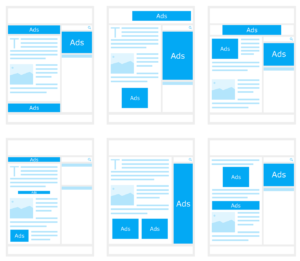
Sponsored content. Branded content. Paid content. No matter what outlets call it, there’s no argument that it’s common to see news outlets publishing these pay-for-play posts. If you’re unfamiliar with this term, this is when a company pays a publication to publish an article. With social media breaking news before readers get to their websites and ad blocking apps causing decreased ad revenue, news outlets are looking for ways to bring in more money from consumers, which has led to the rise of sponsored content. The issue for readers is that they may confuse these posts with a news story. As you continue reading the news, be sure to ask yourself these three questions to avoid confusing a sponsored post with a genuine news story.
1. Are there any mentions of “paid” or “sponsored” on the article? The easiest way to identify sponsored content is when the news organization tells you that’s what it is. How they tell you may vary from site to site, but it’s common to see websites mention it upfront, so readers are aware from the get-go. The New York Times, for example, lists at the top of the article, “Paid Post,” to be fully transparent (See these stories from Shell and General Electric). Other outlets, like in this article from TechCrunch, note at the beginning that this is Sponsored Content and list who the sponsor is.
2. Who authored the story? While a reporter may write a feature about a brand, in most cases, a reporter isn’t going to be writing a fully promotional post about a company. A sponsored post may not have a name associated with the article, rather it might, have “Staff” as the author. Others will actually list the brand itself as the author. Here’s an example of a sponsored piece on Forbes by Constant Contact. If you skip past the author and get right to the content, it’s easy to mistake these for news articles. One new wrinkle to this, though, is that news outlets have added custom content to their advertising options. Outlets agree to do all the legwork – writing, design, promote – for a one-time fee. Forbes, The New York Times, The Wall Street Journal – everyone is doing it.
3. Are there links back to a company’s site? If you read this story from the Associated Press, one of the most credible, trusted news sources, what do you see? No links back to a company’s website, but links to additional news articles to provide context. Compare that with this Business Insider article. Notice where all those links are going? The company listed as the sponsor. Some news stories will link to a company page, but it’s much more common that they won’t. Sponsored content isn’t inexpensive, especially at bigger media outlets. To make that investment worthwhile, companies need to see a return on investment. Website traffic, from those unique links in the article, is how they measure success. As you’re reading a news story, take notice to where any links are directing you. If you find that most are to the same business, you may be reading a paid post.
A sponsored post can be a strategic way to place your client in front of its target audience. Used effectively, it can be mutually beneficial to both parties. However, tricking people into following your advice will cost you your followers’ trust, so being as transparent as possible is key to a successful sponsored post.
Great advice, both for consumers who need to be aware of the source of content, and agencies / clients, who can find benefit in the practice, provided it is done transparently.
Thanks, Johnny.